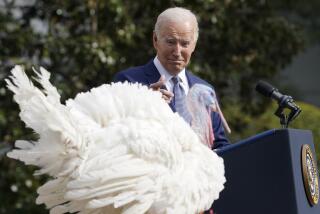Is 90 the new 85? More Americans are in their 90s, Census reports
They say 50 is the new 40, and 40 is the new 20. So perhaps it’s not surprising that experts at the National Institute on Aging are wondering whether 90 is the new 85.
The question was posed Thursday by Richard Suzman, director of the NIA’s Division of Behavioral and Social Research. It was prompted by a new report from the U.S. Census Bureau titled “90+ in the United States: 2006-2008.”
“An increasingly important feature of population aging in the United States is that the older population itself is getting older,” the report begins. Not only are more people reaching the age of 90, but the proportion of nonagenerians among the elderly is increasing. “The oldest segments of the older population are growing the fastest,” according to the report, and this matters because “a nation’s oldest-old population consumes resources disproportionately to its overall population size, and its growth has a significant impact on societal and family resources, including pension and retirement income, health care costs, and intergenerational rela¬tionships.”
As of 2010, there were 1.9 million people in the U.S. who had celebrated their 90th birthday. That’s up from 720,000 in 1980, and the figure is projected to grow to 9 million by 2050.
So who are all these old people? And how did they manage to live so long? Here’s what the report says:
- Most of them are women. Between 2006 and 2008, 74% of Americans in their 90s were women, so they outnumber men by nearly three-to-one.
- Almost nine out of 10 of them are white. The report says that that 88.1% of people who reach age 90 are Caucasian, while 7.6% are African-American and 2.2% are Asian. In addition, 4% of people in this age group said they were of “Hispanic origin.”
- More of them live in California (186,448) than any other state. (Florida ranks second, with 141,922 nonagenerians, followed by New York with 130,549.) However, the states with the highest proportion of nonagenerians are North Dakota (6.9%), Connecticut (6.2%) and Iowa (6.1%).
But these golden years aren’t necessarily the best years of their lives. The report also finds that:
- They are not rich. Their annual median income was $14,760 (meaning that half made more than that and half made less), with 48% of that coming from Social Security, on average.
- Nearly 85% of people who reach age 90 have at least one physical limitation. Two-thirds of people in this age group have trouble walking, climbing stairs or getting around in general.
- They are much more likely than younger senior citizens to be living in a nursing home. Almost 20% of people between the ages of 90 and 94 is in an assisted living facility, along with 31% of those in the 95-to-99 demographic. For the sake of comparison, only 1% of people ages 65 to 69 are in nursing homes.
The full report is online here. It was written by Wan He and Mark N. Muenchrath of the Census Bureau and was supported by the National Institute on Aging, part of the National Institutes of Health.
Return to the Booster Shots blog.
More to Read
Sign up for Essential California
The most important California stories and recommendations in your inbox every morning.
You may occasionally receive promotional content from the Los Angeles Times.











